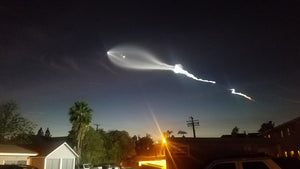Orionid Meteor Shower Oct. 21
The greatest night sky event in October is undoubtedly the Orionids meteor shower, which is expected to peak on October 21st and produce up to 25 meteors per hour on the peak night.
Remnants from the Orionids as well as the Eta Aquarids in May, come from Halley's Comet. The comet is a famous visitor to the inner solar system, making an appearance every 76 years. Last visible from Earth in 1986, and will approach again in 2061. The comet leaves behind a dust trail of small fragments that the Earth travels through twice a year.
The Orionids are easy to spot because they originate from the highly-recognizable constellation Orion. Look for Orion in the eastern sky on the evening of the 21st. The moon will be in the southern sky and hopefully won’t create too much light interference.
The key to observing the meteor shower is darkness. The farther you can get from light pollution the better you will be able to absorb light. The best way to avoid moon interference is to start early in the predawn hours 3:30 to 5am. Let your eyes adjust to darkness for 30 minutes. Dress warmly. Bring a reclining chair, or spread a thick blanket over a flat spot of ground. Lie down and look up somewhat toward the Eastern sky. Meteors can appear in any part of the sky, although their trails will tend to point back toward the radiant Orion(below). Our Skywatcher 15X70 Binoculars can be used for more magnification, or If you would like to take a time-lapse video we would recommend using our Revolution Imager in combination with an All Sky wide angle lens.
We also have some big sales this month on Celestron Advanced VX Telescopes and Sky-Watcher Astrographs. Some of the most trusted brands in amateur astonomy.







